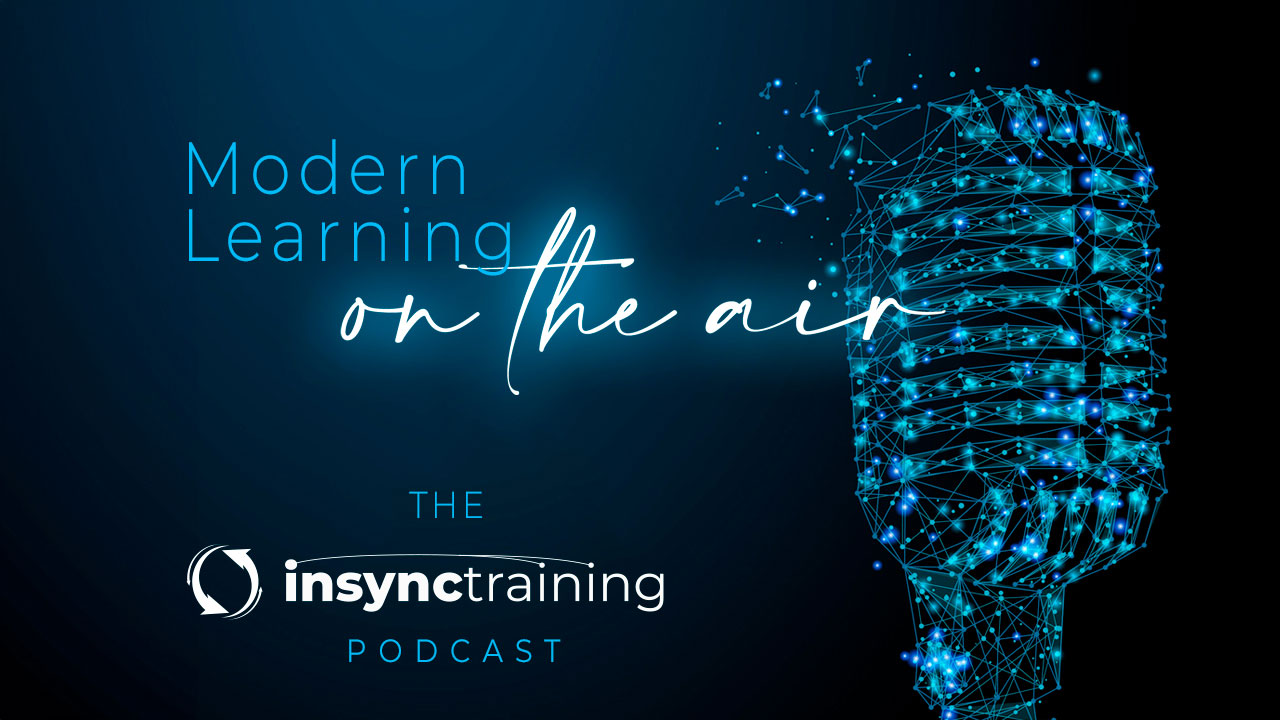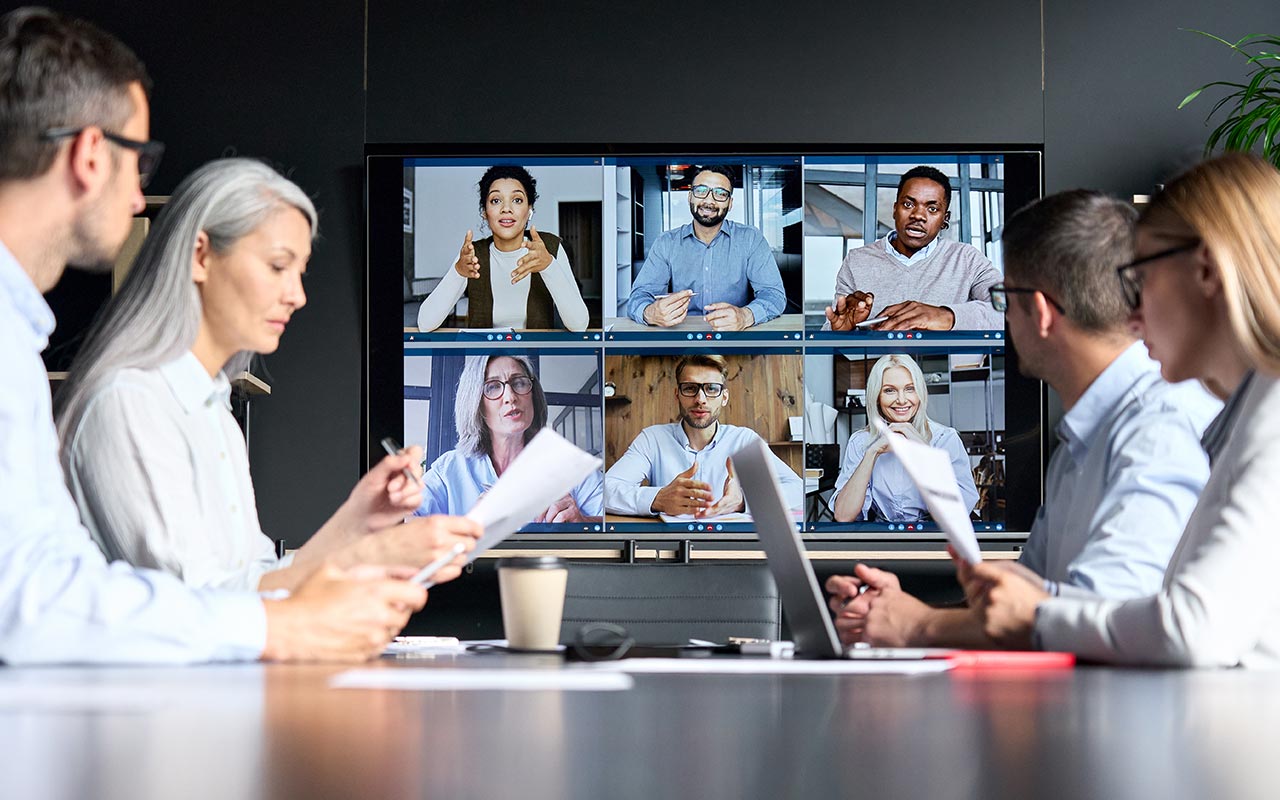5 min read
Step Away from the Tech—Refocusing on What Really Matters in Learning
 Karen Vieth
:
Jun 6, 2024 10:07:34 AM
Karen Vieth
:
Jun 6, 2024 10:07:34 AM

Instructional Technology Is a Tool. Not The Outcome.
In the constantly evolving landscape of edtech, it's easy to get caught up in the latest technological advancements promising to revolutionize how we learn. Every year we get a new gadget, software, or digital platform hailed as the key to redefining educational practices. (AI, anyone?)
Yet, amidst this ongoing quest for the next big way to DEVELOP and DELIVER training, we often forget what's important. Are people actually LEARNING?
This focus on educational technology isn't new. It dates back to over a century ago when Thomas Edison envisioned motion pictures as the ultimate educational tool, predicting the imminent obsolescence of books in schools. When was the last time you learned at the movies?
Fast forward to today, video-based learning and MOOCs have become integral components of our education systems, but not in the absolute, transformative sense once imagined.
The narrative around MOOCs (Massive Open Online Courses) is a testament to the cyclical nature of educational innovation hype. In 2012, MOOCs earned the acclaim of "The Year of the MOOC," symbolizing a democratization of learning for the better. Yet, merely three years later, the initial enthusiasm dampened as researchers concluded online learning hadn't lived up to its "cure-all" expectations. Why? You might ask. Because we were focused on the delivery method and not the outcome.
Throughout all of this, one critical question remains largely unaddressed: Can't it just be about learning?
Beyond Technology
At the heart of education lies a simple truth: growth and understanding. This foundational process is where technology should play a supportive role, enhancing rather than eclipsing the true goal of education—creating meaningful learning experiences. It's essential that we recalibrate our focus back to this core principle, ensuring technology serves as an aide to education, not its focal point.
1. Prioritize Learning; Integrate Technology Thoughtfully
Educational technologies aide in the facilitation of learning, not the ultimate objective. Experienced training professionals know that technology's role is to amplify outcomes where it can genuinely make a difference, not simply to be used for the sake of novelty. The lure of technology, with its promise of ease and rapid delivery, can sometimes distract from the essence of what learning should be about. Buzzwords like "adaptive learning," "AI," and VR might sound innovative but they miss the mark if they don't resonate with the principles of adult learning such as relevance and motivation. Ultimately, technology should prioritize learner needs and learning objectives over organizational convenience, focusing on impactful results rather than superficial benefits.
The trap of technology-centric design often leads to beautifully created yet ineffective training programs. This approach can create a false sense of progress; supervisors may expect improved performance post-training, while employees anticipate personal growth. However, the reality frequently falls short, leading to disappointment and unmet expectations.
The solution? A return to the basics of instructional design. Begin with clearly defined goals and objectives. Understand and plan for how learning will be assessed. The choice of technology and delivery methods should come later, informed by the content and desired outcomes, not dictated by the latest trends. By placing learning at the forefront, we ensure that technology enriches the experience, fostering an engaging environment where growth is nourished.
2. Beyond the Screen: Fostering Human Connections in Learning
While the landscape of learning evolves, moving increasingly away from traditional, in-person settings, one element remains unchanged—our intrinsic need for human connection. We are innately social beings, thriving on interaction and the deep bonds it fosters. Transitioning from face-to-face to digital platforms doesn't have to mean a departure from connection; instead, it challenges us to redefine connection in the context of the digital age and the delivery options we have.
A “People-to-People” Paradigm
The shift toward digital learning environments isn't a shift away from human touch. It's an evolution toward a new mode of human learning and connection for learners that bridges content and collaboration. This is the essence of a people-to-people approach, where technology is a conduit, not a barrier, to meaningful interactions.
Learning today aligns with cutting-edge brain science, promoting dynamic activities, deeper human connections, and collaborative experiences. The outdated focus on technology to create interaction and engagement—more slides, more screen time—is giving way to innovative strategies designed to spark conversations and foster real-time or asynchronous collaborations. We can’t rely on technology to do that for us. At least not authentically.
Crafting Experiences with the Learner at Heart
Adopting InSync’s People-to-People Approach means putting the learner's needs, intents, and experiences first:
- Understand the learners’ intentions.
- Allow these intentions to guide instructional design.
- Design instruction that leads naturally to application.
- Ensure the application provides practice opportunities.
- Turn practice into a path toward mastery.
For example, in live virtual environments, the focus remains (or should remain) on the human element. Facilitators are encouraged to connect early, maintain engagement through eye contact when possible, and attune themselves to the audience’s nonverbal signals. Regular check-ins and adaptations to meet diverse needs are vital. By doing so, facilitators don't just convey content; they weave a narrative of learning, drawing every participant into a shared experience. The objective is clear: equip learners with practical skills and insights that make a tangible impact on their daily work.
This, in its essence, is what learning has always been about—connecting people, fostering growth, and transforming lives, regardless of the medium through which we connect.
3. Elevating Learning through Adaptability and Relevance, Not Technology
Success in corporate training doesn’t solely depend on acquiring the newest tech tools. Instead, it hinges on our ability to adapt existing resources creatively to align with both business goals and learner intentions. This mindset prioritizes crafting learning experiences that are not just engaging and challenging but also deeply inclusive, accessible, and reflective of the needs of a diverse, global hybrid workforce.
Integration over Isolation
Adaptability in learning emphasizes the integration of content with business objectives and learner outcomes, delivered in ways that best serve a global and diverse audience. It’s about ensuring every learning experience—be it eLearning, virtual classrooms, microlearning, or “fill in the learning tech of the day here”—contributes to a program focused on skill acquisition rather than spotlighting the delivery technology. This approach fosters a learning environment where inclusivity and accessibility are paramount, catering to the varied needs and preferences of today’s hybrid workforce, and where the focus is on learning outcomes.
Crafting Comprehensive Learning Journeys
Adopting a campaign-focused mindset toward training programs encourages a shift away from viewing eLearning, virtual learning, and microlearning as separate entities. Instead, it promotes the creation of integrated blended learning experiences that prioritize the acquisition of knowledge and skills over the medium used. This holistic view supports designing with the whole program in mind, ensuring each piece contributes to a seamless, learner-centered journey.
By focusing on adaptability, educators and trainers can develop learning campaigns that resonate with and effectively meet the unique needs of all participants. Such an approach does not just enhance learner engagement; it ensures that the learning is relevant, impactful, and directly tied to advancing business needs and empowering learners with vital skills for success.
One Day, It Will All Be “Learning.” Why Not Today?
Technologies will continue to emerge, and, like Edison’s vision of the motion picture, each advancement will be heralded as THE definitive answer to our training needs. Yet, the real progress lies not in the tools but in our ability to integrate them in a way that focuses on learning. A future where edtech enhances, rather than complicates, the learning experience is within our grasp.
To get there, we need to realize it always should have been "learning." And perhaps, by realizing this, we’ll avoid being distracted by the next shiny object.
Here’s a goal for all of us: to learn, to grow, and to evolve—not because of technology, but alongside it, in pursuit of a brighter, more enlightened future. Why wait for one day?
Ready to Transform Virtual Learning?
Book Your Free 30-Minute Planning Session Now
In just 30 minutes, we can lay the groundwork for your program's success. Our complimentary planning session offers
- Tailored Insights: Understand how our solution can be meticulously adapted to meet your organization's unique needs and challenges.
- Actionable Steps: Together, we'll map out the path to your training program's success, setting immediate and impactful goals.
Don't miss this opportunity to elevate your training approach with our unmatched virtual learning formula. Contact us now to schedule your Essential Starter Bundle 30-Minute Planning Session, and take the first step toward achieving your company’s learning and development goals.

Infographic - 5 Key Moments of Learner Need
The Five Moments of Need model by Bob Mosher and Conrad Gotffredson identifies 5 key moments a learner will need additional information after the...

Blended Learning vs. Hybrid Learning. It's Complicated. (Transcript)
Transcript: A Conversation with Jennifer Hofmann and Karen Vieth Tune into the InSync Podcast where Karen Vieth, the Vice President of Virtual...
